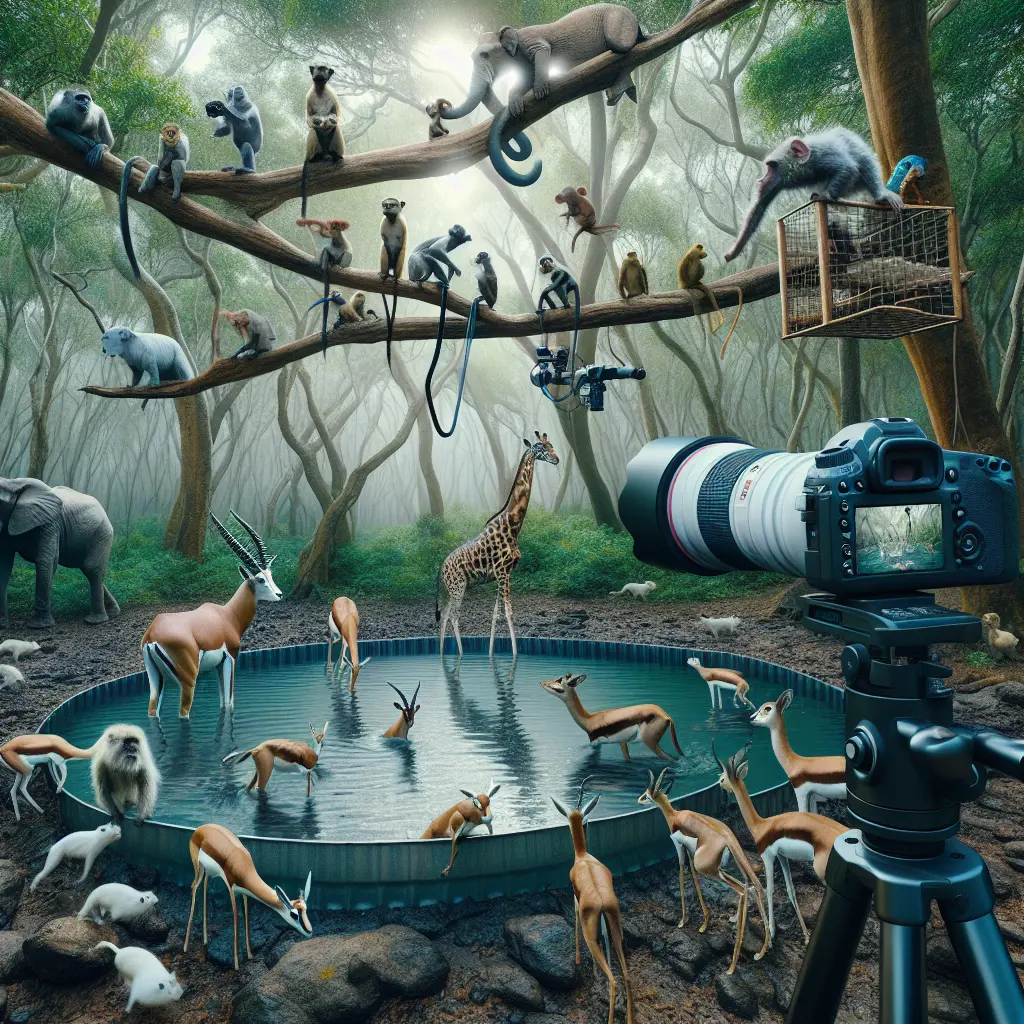
Wildlife photography is a captivating blend of art and science, requiring both technical skill and a profound understanding of animal behavior. This pursuit demands not only a keen eye for detail but also an appreciation of the subtle nuances that define animal interactions. In this blog post, we will explore essential wildlife photography tips, from understanding animal behavior to perfecting photo composition, all while considering recent trends, technological advancements, and ethical practices.
Understanding Animal Behavior: The Foundation of Wildlife Photography
Capturing the essence of animal behavior starts with observation and patience. It is pivotal in anticipating movements and interactions, allowing photographers to capture wildlife moments that tell compelling stories. Recent developments in wildlife observation techniques have been aided by new infrastructure, such as the observation tower at Jacob Krumm, which provides an elevated perspective on animal habitats (source). This highlights the importance of having a strategic vantage point in photographing animals in the wild.
In addition to physical infrastructure, social media has emerged as both a boon and a challenge for wildlife photography. While platforms offer unprecedented opportunities to share stunning nature photography, they also bring about risks. Scientists warn that selfie hunters can inadvertently harm flora and fauna, urging for responsible photography practices (source). Therefore, ethical wildlife photography emphasizes minimizing human impact on natural environments.
Advancements in Wildlife Photography Equipment
The evolution of camera technology has significantly impacted how we capture the essence of animal behavior. Choosing the right equipment is crucial. For instance, Pentax offers some of the best lenses for DSLRs that enhance wildlife photo composition through superior zoom and clarity (source). In 2024, advancements continue with lenses that provide higher resolution and faster autofocus capabilities, ideal for dynamic wildlife scenes (source).
High-quality lenses allow photographers to zoom in on nature without disturbing wildlife, facilitating the capture of detailed animal behavior insights from a distance. This approach not only respects the natural habitat but also provides the opportunity to photograph fleeting moments that define animal interaction photography.
Techniques for Capturing Wildlife Moments
To excel in capturing wildlife moments, it’s essential to employ specific animal photography techniques. Here are some effective strategies:
Anticipate Behavior: Spend time observing before photographing. Understanding feeding times, mating rituals, or migration patterns can position you to capture unique moments.
Use Natural Light: Early morning or late afternoon light can enhance the colors and mood of your wildlife images.
Focus on Composition: Employ the rule of thirds, leading lines, or framing within your wildlife photography to add depth and interest.
Patience is Key: Wildlife does not operate on human schedules. Being patient increases your chances of witnessing and capturing extraordinary interactions.
These techniques enhance your ability to capture the essence of animal behavior while refining your nature photography skills.
Case Study: Documenting Coastal Wildlife
Coastal areas offer unique opportunities for wildlife observation. A study exploring Britain's best coastal walks reveals how these regions are rich with diverse wildlife (source). By integrating these locations into your wildlife photography endeavors, you can document varied species and behaviors.
For example, consider photographing seals along Britain's shores. Understanding their haul-out behaviors or pup-rearing activities can result in powerful storytelling images. This approach not only showcases the photographer's skill but also raises awareness about conservation needs.
Embarking on Your Wildlife Photography Journey
Embarking on a journey to capture the essence of animal behavior in wildlife photography requires dedication and continuous learning. Whether you're a novice seeking guidance or an experienced photographer refining your craft, embracing new insights and techniques will elevate your work.
Stay informed with updates from exhibitions like 'Color Crush' at SCAA Gallery, which showcase artistic interpretations of nature (source), or join discussions on platforms discussing responsible photography.
Ultimately, by honing your wildlife photography skills and understanding animal behavior intricacies, you can create images that resonate with audiences worldwide. What stories will your next wildlife adventure reveal?
Concluding Your Wildlife Photography Journey
Wildlife photography merges art and science, hinging on understanding animal behavior and employing advanced equipment. Observing behavior and choosing the right gear, like high-resolution lenses, enable photographers to capture the essence of animal interactions without intrusion. Techniques such as using natural light and mastering composition are crucial, while patience remains a virtue. Coastal regions, rich in biodiversity, offer unique opportunities to document species and raise conservation awareness. Ethical practices ensure minimal impact on natural habitats, vital for sustainable photography.
As you refine your skills, let your lens tell compelling stories that resonate globally. Embark on your next wildlife adventure with renewed insight and passion. Share your experiences and thoughts in the comments below—what stories will your images tell? Your journey into the wild holds endless possibilities.
Happy photographing!
Author: Emily Dawson